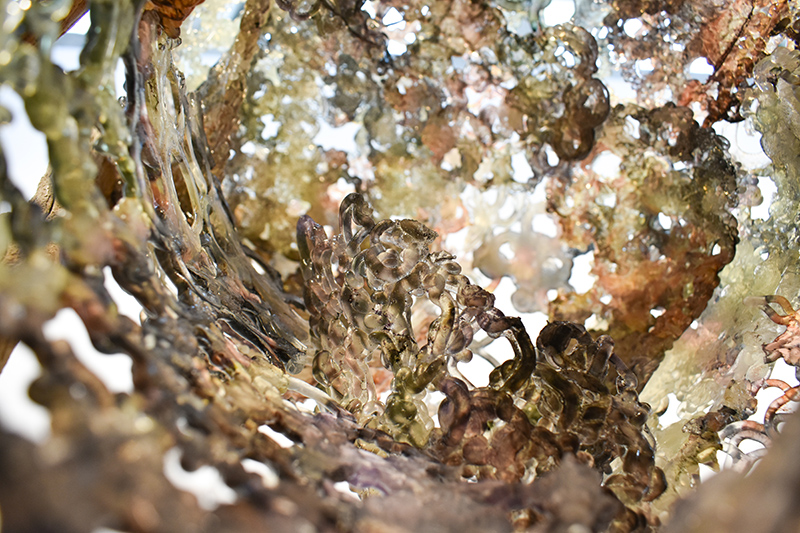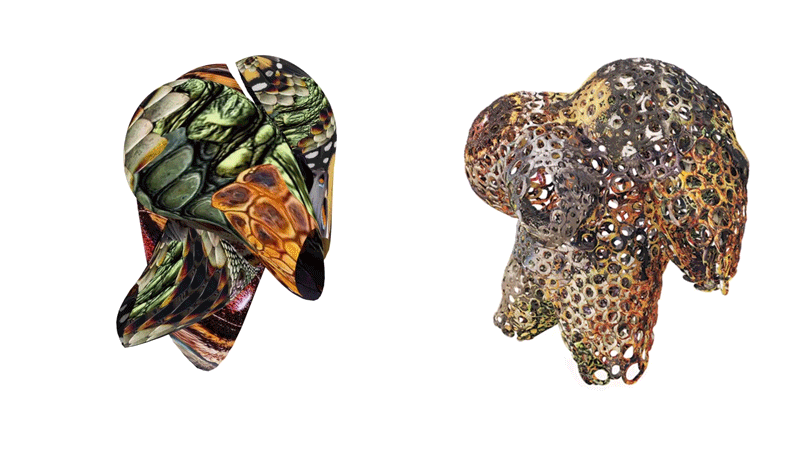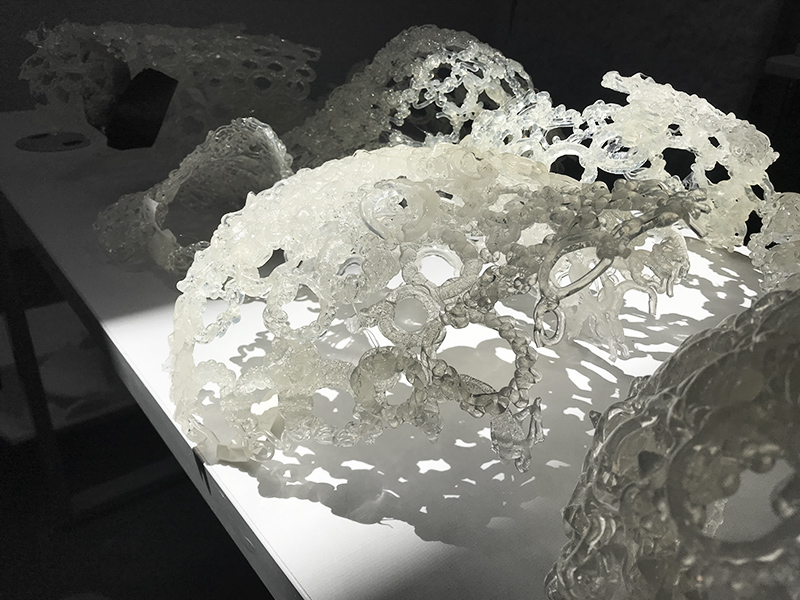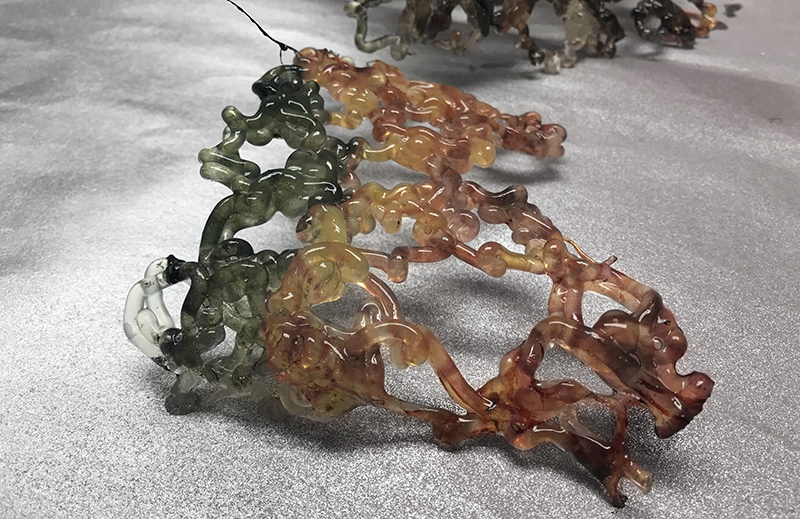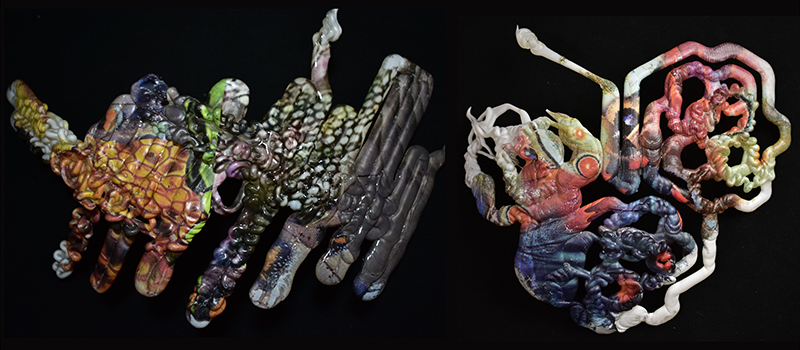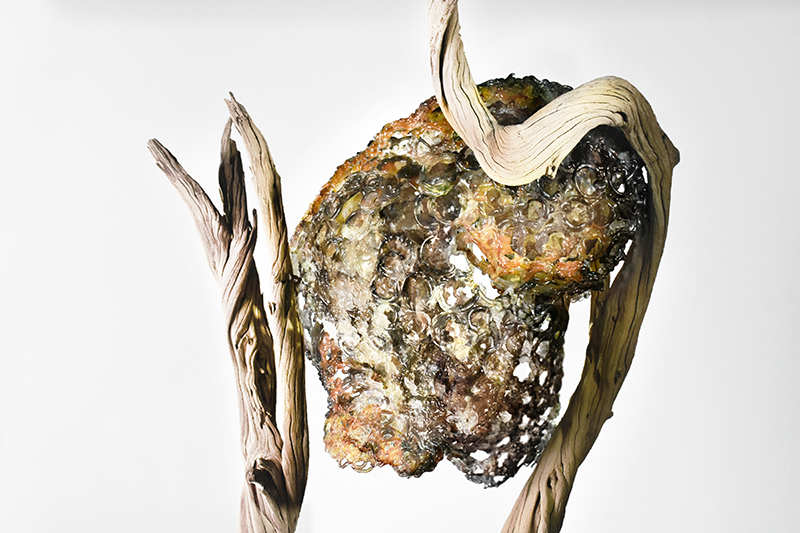Robotic Fabrication:
Bat Shelter
Southern California Institute of Architecture (SCI-Arc)
︎
ADVANCED ROBOTIC FABRICATION 2019:
SHELTER FOR THE ENDANGERED LITTLE BROWN BAT
Until about a decade ago, North American cave systems provided ideal roosting and hibernation habitats for a species of microbat common to the Northeast. These tiny insectivores, aptly called Little Brown Bats, once occupied these caverns in the tens of thousands, forming tightly packed hibernation colonies in harsh winters when food is scarce. In recent years, these moist caves have become incubators for a debilitating fungal growth responsible for an abrupt and astonishing loss in the bats' population. As of 2017, less than 10% of the Little Brown Bat survives in the Northeast. ‘Bat Shelter’ is the prototype for a modular, arboreal habitat designed to provide colonies of the Little Brown Bat with a synthetic alternative to fungal laden caverns. Shelter modules are designed to attach together into large clusters, providing a scalable network of chambers and openings that can safely shelter thousands of these social bats within forest trees. Bat Shelter explores the potential of thick, textured, and multilayered shell enclosures to provide better habitation (surface patterning ideal for landing on, climbing, and hanging), ventilation, and protection.
Bat Shelter is student work from our robotic fabrication course taught at SCI-Arc. We asked students to conceptualize, digitally simulate, and then prototype a synthetic habitat designed to aid in the survival of a currently endangered animal species.
Course:
Advanced Robotic Fabrication 2019: Animal House
The Southern California Institute of Architecture
Instructors:
Garrett Sutherlin Santo &
Herwig Baumgartner
Students:
Asmaa Abu Assaf, Ruquia Akter, Sara Alsubhi, Swetha Arunkumar, Gun Srisawat, WeiTse Yuan .
Bat Shelter is student work from our robotic fabrication course taught at SCI-Arc. We asked students to conceptualize, digitally simulate, and then prototype a synthetic habitat designed to aid in the survival of a currently endangered animal species.
Course:
Advanced Robotic Fabrication 2019: Animal House
The Southern California Institute of Architecture
Instructors:
Garrett Sutherlin Santo &
Herwig Baumgartner
Students:
Asmaa Abu Assaf, Ruquia Akter, Sara Alsubhi, Swetha Arunkumar, Gun Srisawat, WeiTse Yuan .

